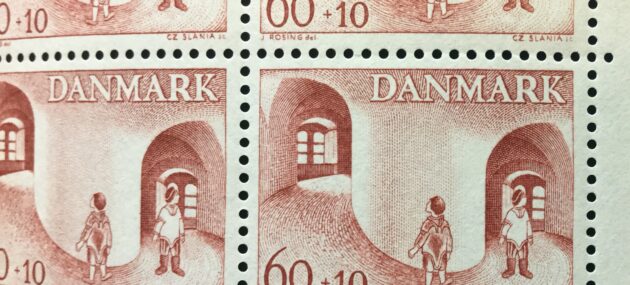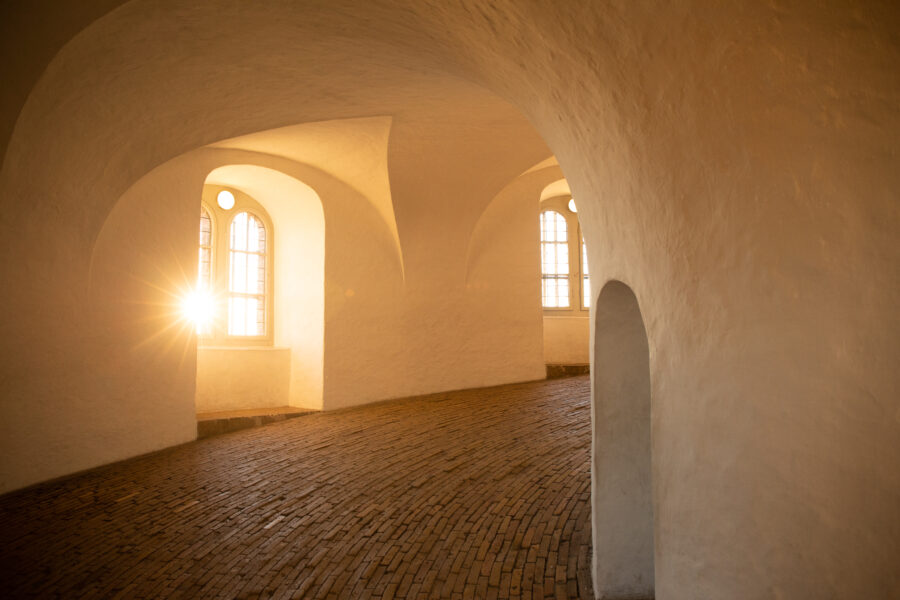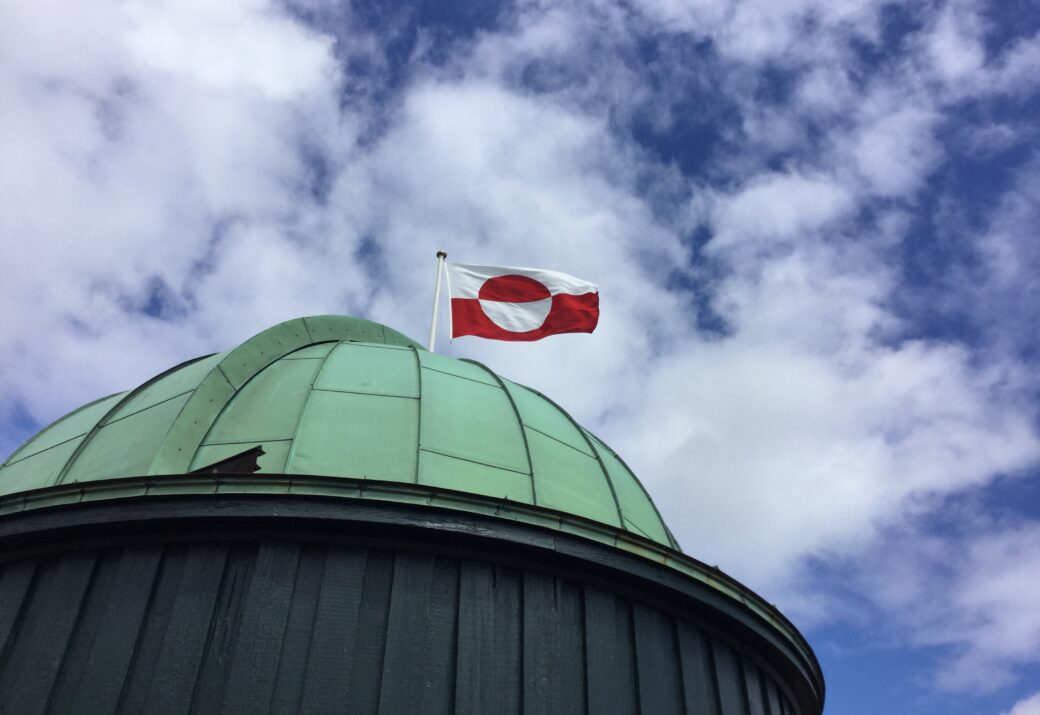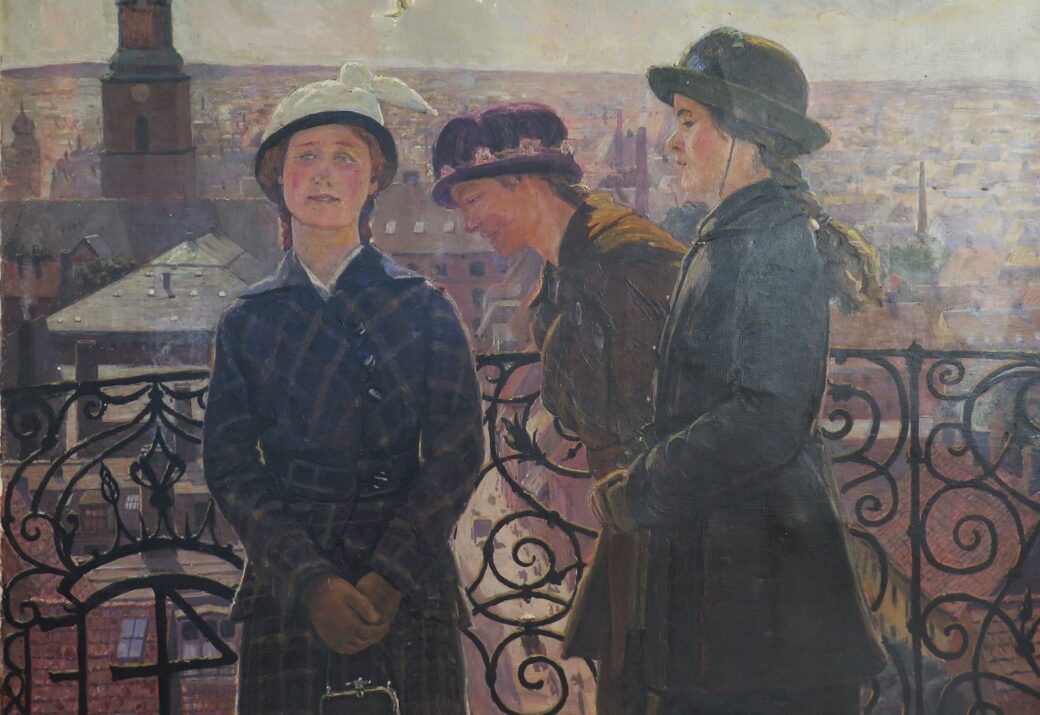This website uses cookies so that we can provide you with the best user experience possible. Cookie information is stored in your browser and performs functions such as recognising you when you return to our website and helping our team to understand which sections of the website you find most interesting and useful.

Fell with a Screw
In the middle of the open sea, there is no fell. That was what two young Greenlanders came to realise when they set out on the long and highly unusual journey from their own shores to those of Denmark in 1724. If we are to believe the drum song that one of them later wrote about the trip, he even climbed up the ship’s mast to look for land and fells. But it made little difference.
Surprisingly enough, he found exactly what he was looking for when he arrived in Copenhagen. For, here stood what he in the song refers to as, “the man-made fell”, which he and his friend ascended, “’through a twisted hollow, through the tube”. Or as it says, in translation as well, in a different and slightly longer version of the song:
“This yes hello, yes hello yes yes this
This I ascended
Up through the man-made fell’s inner screw walk
This yes hello yes how beautiful the inside was
Hello yes yes how shiny bright the inside was
Hello yes yes, hello yes yes this ha á á
So beautiful inside so bright inside
I walked up through it I walked higher and higher up through it
This man-made fell’s inner screw walk
Do not walked through it do not climb it
Do not step on the large surface on the top
This large tin roof its large floor on the top
In many people this
This yes yes hello this yes yes yes yes
yes yes yes”.
Seafarers
There is general consensus that the fell, which the two Greenlanders ascended, is the Round Tower. The flat platform on top fits, but above all, the whitewashed Spiral Ramp that runs up into the air does. Already the missionary Poul Egede (1708-89), who heard the song in its original version in the 1720s, explains that its author described impressions from his trip, among them of “the houses externally and internally wonderful and great, and the Round Tower in particular, which he calls a made mountain with a spiral walk all the way to the top”.
Poul Egede heard the song in Greenland, for one of the major causes of the two Greenlanders’ trip, which lasted almost a year, was that they should return and tell their fellow countrymen about Denmark. By doing so, they should improve the impression of the Danes, who were otherwise perceived by the Greenlanders as “people who have neither land nor houses, but ceaselessly float around on the sea”, as Poul Egede’s father, the Norwegian-born missionary and coloniser Hans Egede (1686-1758), writes.

The Hunt for the Catholic Norsemen
There were several reasons why the Danes wanted to brand themselves better to the Greenlanders. Greenland was actually a Norwegian possession but had been under Danish rule since 1380 when Norway entered into a union with Denmark. However, Denmark’s interest in the North Atlantic island had been limited, and an actual colonisation only began when Hans Egede sailed to Greenland in 1721 in order to convert those Norsemen he believed still lived there, from Catholics to Protestants.
When Hans Egede found no Norsemen whose salvation he could help on the way, he tried among the Inuit instead. The mission was to be financed by the private Bergen Greenland Company, to which the Danish-Norwegian king had given monopoly on trade in Greenland, but there was still competition from Dutch whalers who travelled up there, so it was worth being on good terms with the Greenlanders.
Advertising Campaign in Kayak
The Danish-Norwegian author Ludvig Holberg (1684-1754), who dealt with the situation in Greenland in several of his writings, for instance wrote that one should treat the Greenlanders well, “since the benefits that can be expected from trading very much rests on the inhabitants’ love, which shall encourage them to trade their commodities with the Danes and the Norwegians rather than the Dutchmen”. Even if the trade turns out not to be profitable, there are still some benefits, Holberg writes, for “Although one might not make a profit on trading, it will still be worth the while since one gets the opportunity to enlighten a considerable lot of crude pagans”.
“The stay in Denmark also included a visit to the King himself”
Holberg himself experienced the two young travelling Greenlanders, Pôq and Qiperoq, in Copenhagen. The Bergen Greenland Company, which was already ailing financially at that time, arranged an advertising campaign during their stay, where Pôq and Qiperoq paddled the kayak through the canals of Copenhagen to the tunes of orchestral music as part of a larger procession that ended with boats full of Greenlandic commodities. The stay in Denmark also included a visit to the King himself.
On the way back to Greenland, Qiperoq died but Pôq made it home and sang his song about the man-made fell, until he and his entire family a few years later, during another visit to Denmark, were infected with smallpox and died. The song, however, lived its own life and wandered from Western Greenland, where it was originally sung, to Eastern Greenland, where it was recorded and written down many years later. Similarly, the memory of Pôq’s and Qiperoq’s visit has been kept alive by being portrayed in a novel and immortalized on stamps. And the fell in the middle of Copenhagen – it is still there with its inner screw walk.


